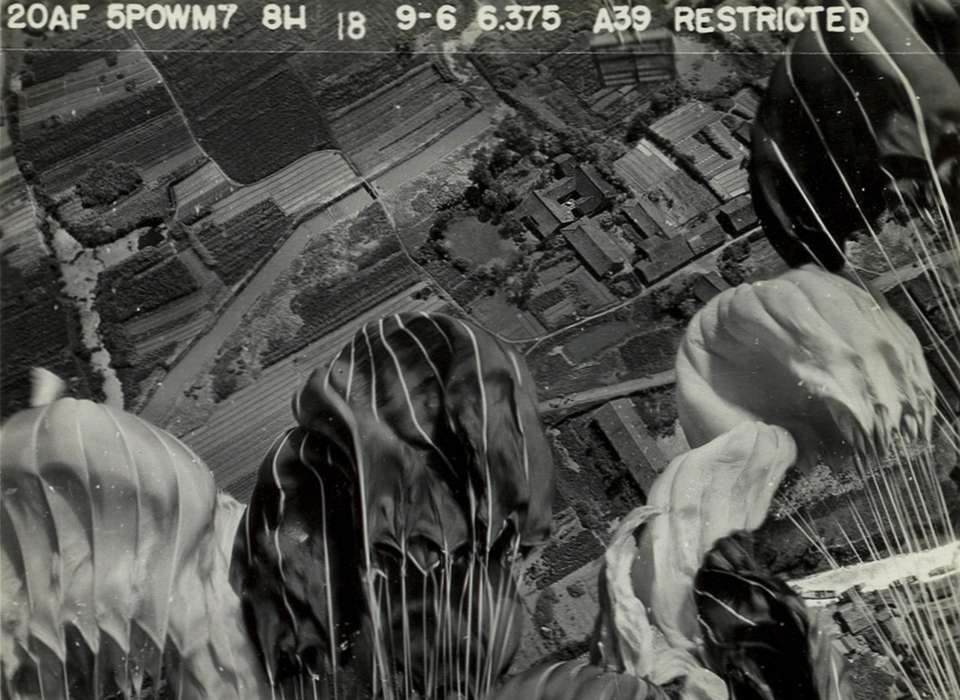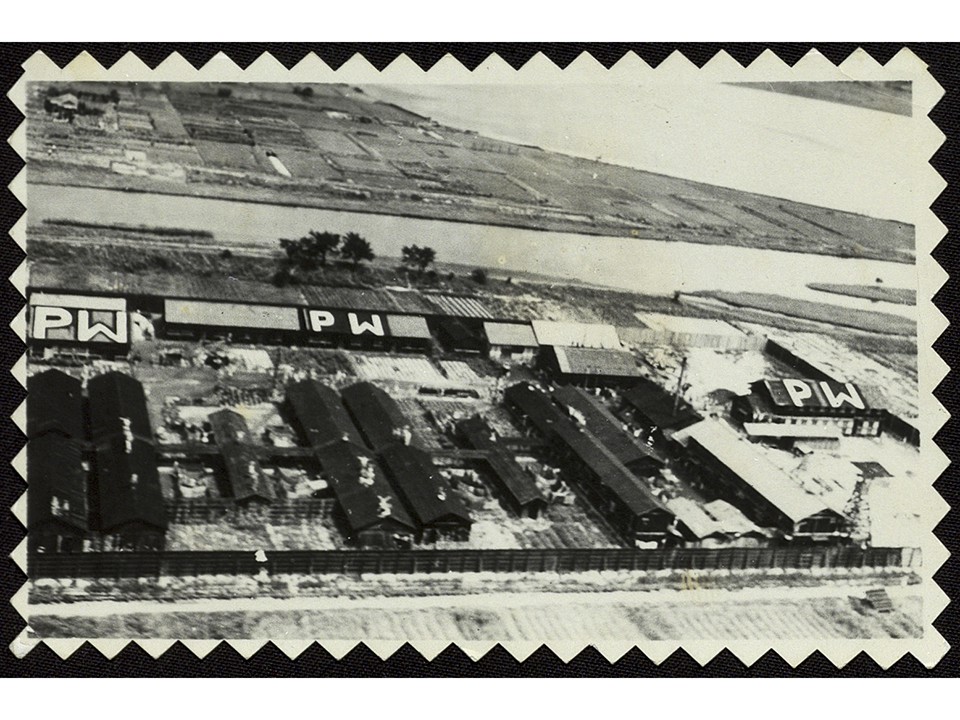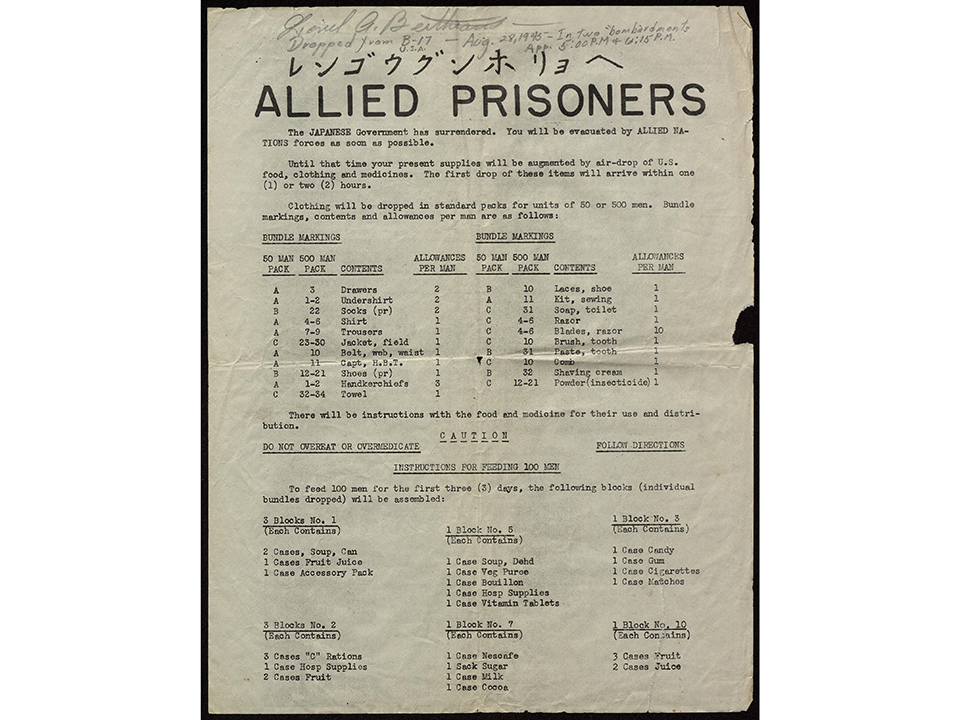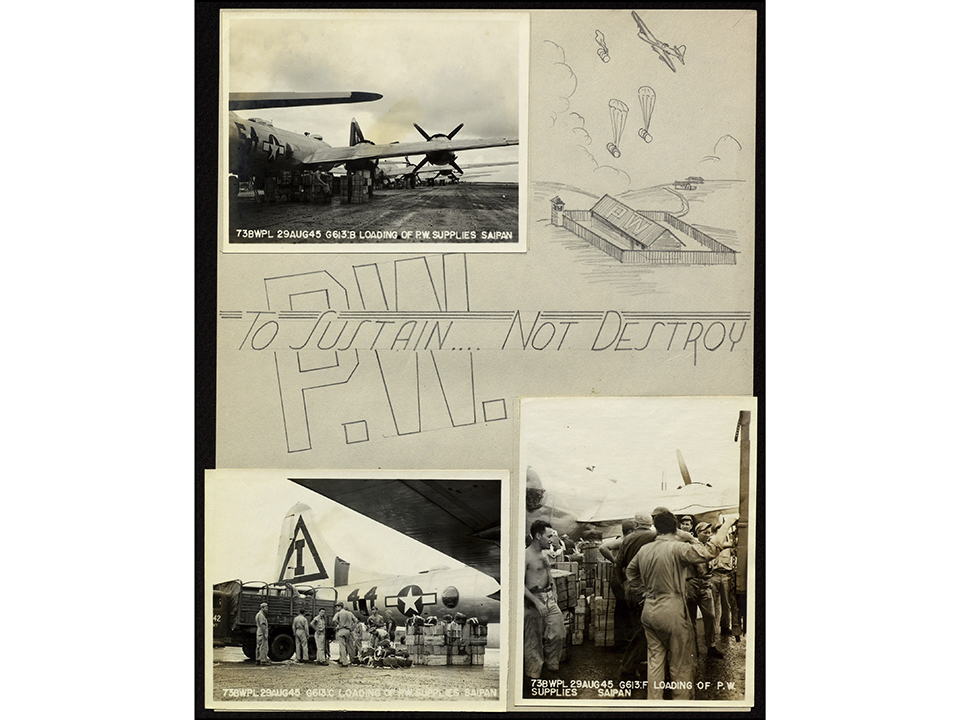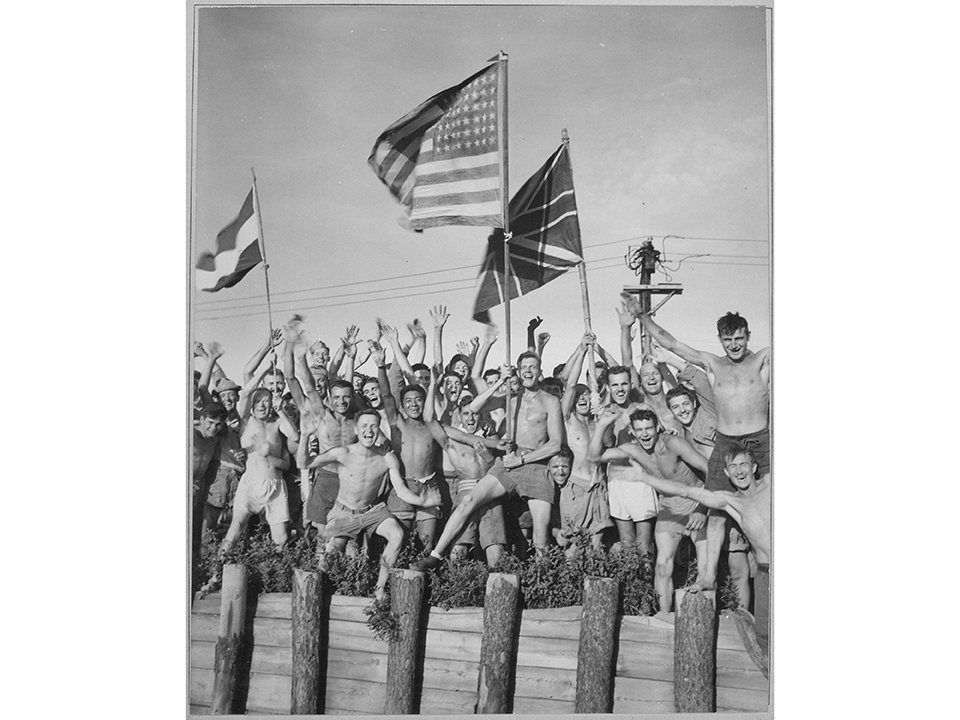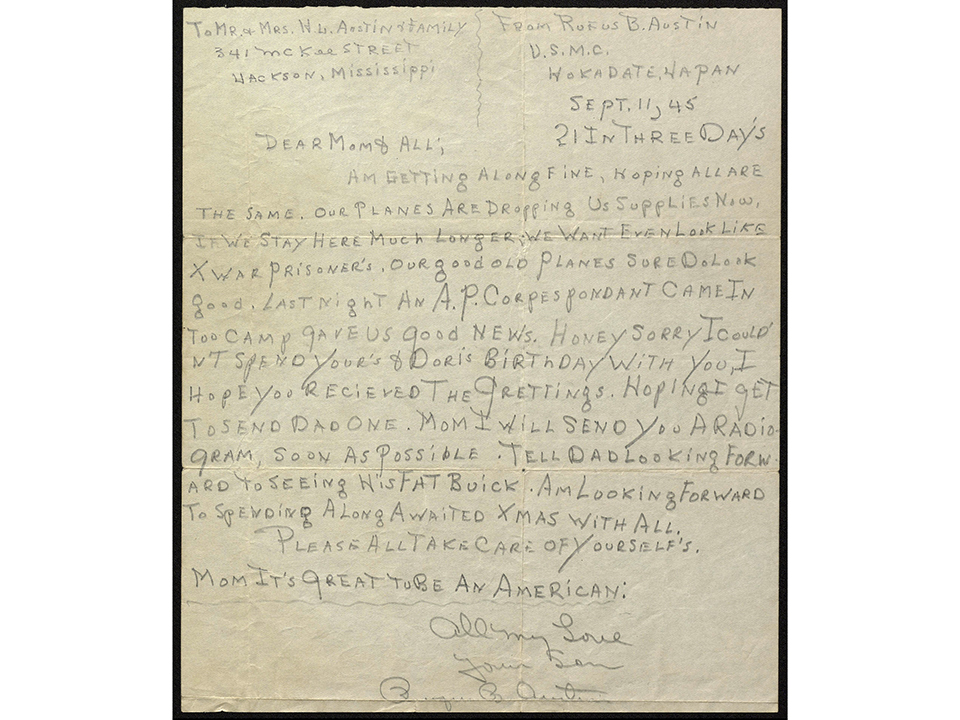Victory in the Pacific was a long time coming for those held by the Japanese as prisoners of war. More than 27,465 Americans captured in the Pacific fell outside of the protections of the Geneva Conventions in relation to prisoners of war. The death rate among POWs in the Pacifc was over 40 percent—11,107 would not return home. Most of those who perished were starved to death, ravaged by tropical diseases, or were killed while being transported in the holds of unmarked vessels termed “hellships.”
By the end of the war, the surviving American POWs were spread out in camps all over the Pacific region, barely hanging on to life and clinging to hopes of survival after an average length of captivity of three years. They had endured dismal conditions, often brutal treatment, and had been forced to labor long hours with very little nourishment. Since they were moved throughout Japanese-held territory to wherever laborers were needed, their locations were often very isolated. Some POWs worked on docks and industrial facilities in urban areas, while many others worked in mines of all types, some in underground or remote locations. There were roughly 775 camps which held Allied POWs, with 185 in Japan and the rest scattered throughout Asia.
Accounting for and recovering all surviving American POWs was a major undertaking that was intended to be carried out as quickly as possible, but some waited almost a full month after Japan’s official surrender. From August 30-September 20, the United States carried out Operation Swift Mercy, with the objective of aiding and supplying POWs until they could be evacuated. POWs in the Tokyo region were recovered relatively quickly and were taken to hospital ships and then evacuated in the first weeks after the surrender. Even though aerial reconnaissance and intelligence had uncovered the locations of some camps, other slave labor facilities and sites of smaller work detachments were still unknown to Allied officials at the war’s end. Expedited efforts to identify and supply the camps began immediately upon surrender. General Macarthur ordered that Japanese officials account for all POWs in their hands and that they visually mark each camp installation by painting “PW” on the roofs of the sites where POWs were detained.
As opposed to the liberation of POW camps in Europe, where liberating Armies were moving through particular areas and overrunning the enemy and their camps, the POWs in the Pacific were first seen from the air. Instead of tanks busting down camp gates, Allied planes dropped leaflets from above with news that the war was over. The Allied aerial campaign, Operation Bird Cage, also informed the prisoners to remain in place and that help would be on the way as soon as possible. Often far from fighting and with no discernable front line, the leaflets were the first notification that many received of the war’s end and their freedom. For many, after years of inhumane treatment and brutality, the news of Victory seemed like another rumor. One report cited a POW at the Hitachi camp, “Today with the planes coming low and the pilots waving...a huge lump came to my throat. It is hard to realize that three years and eight months of misery, privation, sickness, starvation and death have past and left me here.” Former POW Staff Sergeant Lester Tenney described this moment at his camp 30 miles from Nagasaki as “exhilaration.”
USMC Private Lionel Bertheaud saved a leaflet dropped on his camp on August 28, 1945 by a B-17. Bertheaud had been a prisoner for 44 months, since the fall of Corregidor in May 1942. While imprisoned, he had lost half of his body weight and by liberation weighed only 80 pounds.
After the leaflets came the supplies, lots of them. Louis Zamperini reported about his experiences in Naoetsu and in the book on his life, Unbroken, author Laura Hillenbrand wrote of a supply bombardment. First, as fighters flew over and dropped bags of supplies, “The POWs ran for their lives. One man, leaping from a fence to avoid getting clobbered, broke his ankle. One bag missed the camp altogether, splashing down in the river. The POWs ventured out, tore into the bags, and split up the loot. Each man received half a tin of tangerines, one pack of hardtack, two cigarettes, and a bit of candy.” Three days later, the full force of supply arrived as B-29s flew over, bomb bays opened, and instead of the incendiaries dropping just days before on Japanese cities, they dropped supply canisters. Crates busted open as they fell and food rained from the sky. Hillebrand wrote, “Louis and Tinker just missed being totaled by a giant drum full of shoes that they never saw coming. It shot through the benjo [latrine] roof, landing on an unfortunate Australian, whose leg was broken, and a Yank from Idaho, whose skull was fractured, fortunately not fatally.”
Col. Charles Frank, a US Army veterinarian, who during the siege of the Philippines was in charge of identifying which of the animals in his care to eat first, was in Korea at war’s end. In his years as a POW, including two years in Davao Penal Colony and also during four hellship transports, Frank had witnessed the death of many friends. In an “After Action Report” style briefing compiled after his liberation, Frank reported on a close call at the Jinsen Camp in early September 1945: “Captain Orson suffered a broken leg here when he was hit by a 50 gallon drum containing supplies, after the parachute holding the supplies had broken away.”
Incidents and injuries like these led the resourceful former POWs to create and clearly label improvised drop zones, painting targets or “DROP HERE,” onto the ground like they did at Naoetsu. In an oral history with the Museum, Jack Skaggs described men painting bullseyes on the ground with lime in order to direct the supply bombers. Men who had been starving for years gorged themselves on the long-awaited aid. Every bit of it was used, consumed, traded, or recycled. Even the parachutes soon took on other forms and were remade into cozy blankets or into Allied flags sewn by tailors in the camps.
USMC Sergeant Rufus Baker Austin, captured on Wake Island in December 1941, wrote home on September 11, 1945, just two days before his 21st birthday, “Our planes are dropping us supplies now. If we stay here much longer, we won’t even look like X war prisoners. Our good old planes sure do look good.” He signs off, “Mom, it’s great to be an American.”
Staff Sergeant Frederick Spacal reported in a letter to a former crewmate of the days after liberation at the Omori camp, “Our Navy planes started coming over our camp Aug. 26 and B-29s on Aug. 27, dropping all kinds of supplies, those last few days were like Xmas.”
The evacuation of waterfront camps by the US Navy began on August 29, with rescues continuing well into September when camps in Singapore, Borneo, Manchuria, and other faraway regions finally received relief. The first months and years of freedom were spent refeeding, redirecting, and recalibrating. Some would recover and rebuild their lives, but the years of brutality and deprivation were forever imprinted on those who survived as prisoners of war in the Pacific. Operation Swift Mercy definitely saved lives. The 1,000 missions flown, which accounted for 4,500 tons of food, clothing, and medical supplies, however, also cost the lives of 77 airmen lost during the operation.
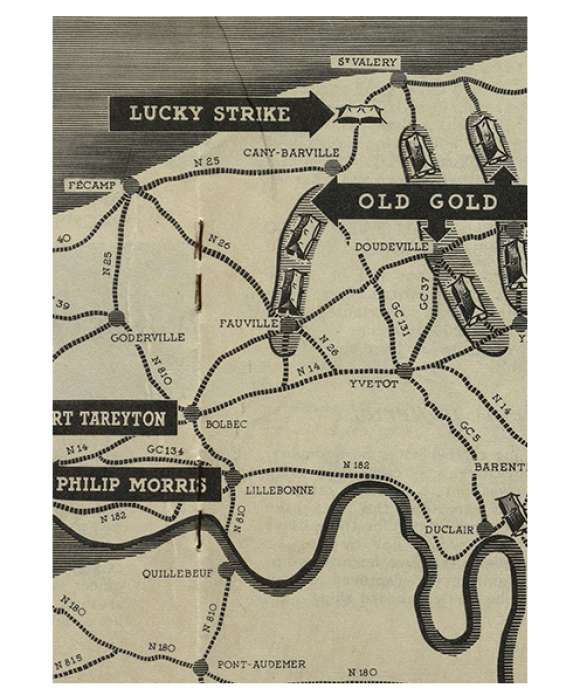
Camp Lucky Strike:
RAMP Camp No. 1
The cigarette camp “Camp Lucky Strike” was a bustling tent city of 58,000 impatient American troops awaiting transportation back to the United States after Victory in Europe. Lucky Strike was described as both “seventh heaven” and complete chaos.
This article is part of an ongoing series commemorating the 75th anniversary of the end of World War II made possible by Bank of America.
Kim Guise
Kimberly Guise holds a BA in German and Judaic Studies from the University of Massachusetts Amherst. She also studied at the Universität Freiburg in Germany and holds a masters in Library and Information Science (MLIS) from Louisiana State University. Kim is fluent in German, reads Yiddish, and specializes in the American prisoner-of-war experience in World War II.
Cite this article:
MLA Citation:
APA Citation:
Chicago Style Citation:
